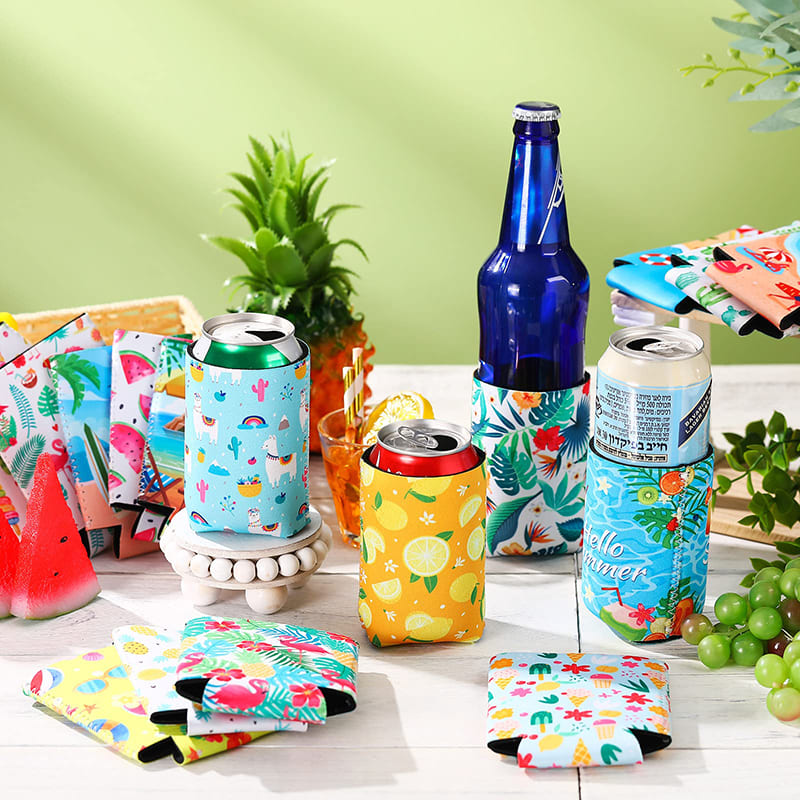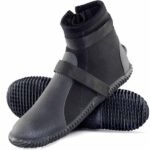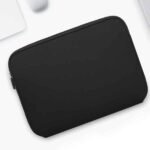Ever found yourself sipping a cold beer at a barbecue and calling that drink sleeve a "coozie"? Or maybe someone corrected you and said, "Actually, it’s ‘koozie’!"? Don’t worry—you’re not alone. This tiny drink accessory has sparked plenty of debate over the years. It might seem like a small thing, but the story behind the spelling says a lot about branding, regional slang, and even drink science.
The correct spelling is "koozie", a trademarked name first used for insulated beverage holders. While some people say or spell it "coozie," that’s technically a common misspelling. "Koozie" is the version most widely recognized in the U.S., especially in the promotional products world.
So why is there so much fuss about how to spell it? Let’s dive into the full story—where the word came from, what other names people use, and even the science behind why these little sleeves actually work.
Is it a drink cozy or koozie?
Both terms are used, but "koozie" is the more specific and widely accepted term in the U.S. for foam or neoprene sleeves that keep drinks cold. "Drink cozy" is a broader term often used for warm drink covers like teapot cozies.
Dive Deeper: Drink Cozy vs Koozie
The Origin of "Cozy"
The word "cozy" goes way back to British tea culture. Originally, a "tea cozy" was a knitted or fabric cover used to keep a teapot warm. The idea was insulation—but for hot drinks, not cold ones.
How "Koozie" Took Over
Fast-forward to the 1980s in the U.S.—Radio Cap Corporation trademarked the term “Koozie” for a product designed to keep cold drinks colder. Unlike the soft, knitted look of a tea cozy, the koozie was made of foam and eventually neoprene. Think outdoor events, tailgating, and summer barbecues.
How Often Are the Terms Used?
Here’s a quick look at U.S. search trends:
| Term | Monthly Google Searches (US) |
|---|---|
| Koozie | 33,000+ |
| Drink Cozy | 3,600+ |
| Beer Sleeve | 2,400+ |
| Can Cooler | 5,000+ |
"Koozie" wins by a landslide, making it the go-to term in most casual conversations and commercial listings.
Why are they called koozies?
The word "koozie" started as a trademarked product name by Radio Cap Corporation in the early 1980s, and it stuck thanks to smart marketing and widespread promotional use.
Dive Deeper: Understanding the Koozie Name
Trademark Origins
The term was officially registered in 1980 by Radio Cap Corporation (RCC), a company that originally made baseball caps. They expanded into drink accessories and coined the name "Koozie" for their insulated drink holder.
Promotional Power
One big reason the name stuck? Branded giveaways. RCC and other companies handed out koozies at sporting events, concerts, and company picnics. These freebies put the term into the public consciousness.
Genericized Term
Like "Xerox" or "Velcro," "Koozie" has become a generic trademark, meaning people now use it to refer to any similar product—even if it’s not from the original company.
| Year | Key Event |
|---|---|
| 1980 | Koozie trademark registered |
| 1982 | First wide promotional use |
| 1990s | Became common giveaway item |
| 2001 | Term entered pop culture |
Who invented the drink koozie?
Bonnie McGough is credited with patenting an early design of the modern drink koozie in 1980 (granted in 1981), which closely resembled what we use today. While similar products may have existed, her design was among the first formally documented.
Dive Deeper: Koozie Origins
Bonnie’s Patent
In 1981, Bonnie McGough filed a U.S. patent for an "insulated beverage cozy." It was made from fabric and foam and designed to fit snugly around a can.
Timeline of Development
| Year | Innovation Stage |
|---|---|
| 1981 | McGough files patent |
| 1982 | Commercial sales begin |
| 1984 | Radio Cap Corporation starts mass marketing |
| 1990s | Koozies become standard promo item |
Other Early Examples
Before McGough, people used homemade cozies for teacups and mugs. But her design shifted the focus to cold beverages, leading the way for the modern neoprene beer sleeve.
What is another name for a koozie?
Common alternatives include can cooler, beer sleeve, drink hugger, stubby holder (in Australia), and bottle jacket.
Dive Deeper: Koozie Synonyms Around the World
What People Call It Regionally
| Region | Common Term |
|---|---|
| U.S. | Koozie, Can Cooler |
| Canada | Can Cooler, Beer Sleeve |
| Australia | Stubby Holder |
| UK | Drink Cozy |
By Material
- Neoprene Sleeve – Most popular for insulation and durability
- Foam Can Cooler – Affordable and lightweight
- Fabric Cozy – Handmade, more niche
Fun Nicknames
- Beer Hugger
- Cold Can Wrap
- Bottle Buddy
What do Americans call Stubby holders?
Americans call them koozies or can coolers—"stubby holder" is mostly used in Australia.
Dive Deeper: Regional Naming Differences
Why the U.S. Doesn’t Say "Stubby"
The word "stubby" comes from older, short beer bottles in Australia. Since U.S. beer bottles are taller and thinner, the term didn’t make sense culturally or visually.
Stubby Holder vs Koozie: Functionally the Same
| Feature | Stubby Holder | Koozie |
|---|---|---|
| Material | Neoprene/Foam | Neoprene/Foam |
| Fits Cans & Bottles | Yes | Yes |
| Region | Australia/NZ | USA/Canada |
Pop Culture Examples
- Koozie: Common in U.S. weddings, tailgates, company swag
- Stubby Holder: Essential in Australian beach BBQs, sports clubs
What do Canadians call koozies?
Canadians often use "can cooler" or "beer sleeve," but "koozie" is also recognized due to U.S. influence.
Dive Deeper: Canadian Terminology for Koozies
U.S. Branding Influence
Because many Canadian products are imported from or marketed similarly to the U.S., Canadians recognize the word "koozie." However, localized terms like "can cooler" are more common in stores.
Quebec & French Canada
In French-speaking areas, you might hear "manchon isolant" or simply "manchon" (sleeve), especially in bilingual packaging.
Example Comparison
| Province | Most Common Term |
|---|---|
| Ontario | Can Cooler |
| British Columbia | Beer Sleeve |
| Quebec | Manchon pour canette |
What is the science behind koozies?
Koozies work by insulating the drink from heat and preventing condensation from forming, both of which help drinks stay cold longer.
Dive Deeper: How Koozies Actually Work
Why Condensation Is the Real Problem
A University of Washington study found that 70% of drink warming comes from condensation, not direct heat. When warm air hits a cold can, moisture forms on the surface—and that process actually heats the can.
How Koozies Help
By creating a barrier between your hand and the can, koozies reduce:
- Heat transfer from your hand
- Airflow around the can
- Moisture buildup (condensation)
Temperature Retention Test
| Setup | Temp After 10 Min | Temp After 30 Min |
|---|---|---|
| No Koozie | 49°F (9.4°C) | 67°F (19.4°C) |
| Foam Koozie | 44°F (6.7°C) | 55°F (12.8°C) |
| Neoprene Koozie | 42°F (5.6°C) | 52°F (11.1°C) |
Pro Tips to Maximize Cooling
- Use thicker neoprene for better insulation
- Keep drinks in shade when possible
- Refrigerate the koozie itself before use
Do koozies keep beer colder?
Yes, koozies can keep beer or any canned beverage significantly colder by slowing down warming caused by hand heat and condensation.
Dive Deeper: Testing the Cooling Power
University Study Breakdown
According to thermodynamics experts, a can without a koozie warms up twice as fast as one with proper insulation.
| Time Elapsed | No Koozie (°C) | Neoprene Koozie (°C) |
|---|---|---|
| 0 min | 4°C | 4°C |
| 10 min | 10°C | 6°C |
| 30 min | 17°C | 11°C |
Outdoor Use Insights
- On a 90°F day: An unprotected beer reaches room temp in under 15 mins
- With koozie: Stays refreshingly cool for 30–40 mins
Conclusion: Want Custom Koozies for Your Brand?
Whether you’re promoting a business, hosting a wedding, or stocking up for a big event—custom koozies are a cost-effective, fun, and functional way to get your name out there.
At Szoneier, we specialize in making premium-quality custom koozies and drink sleeves. We’ve helped countless brands and retailers build memorable experiences with personalized designs, top-tier materials, and fast delivery.
✅ OEM & ODM support
✅ Free design & samples
✅ Low minimums & fast turnaround
✅ Worldwide shipping available















